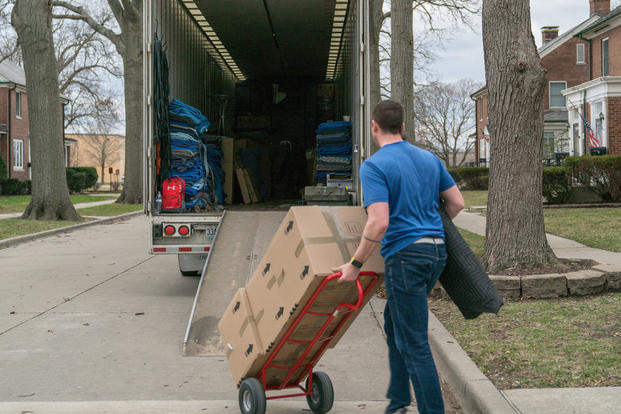Ray daSilva is a 40 year veteran of the moving industry. He currently serves as president of Mobility Exchange, LLC, which partners with the International Association of Movers to promote collaboration and efficiency across the moving industry.
In the four days that I have taken to edit this article and complete my fact checking, the number of signatures on a petition at Change.org to "Hold Military Moving Companies Accountable," started by a frustrated military family member, grew from 37,429 to 67,300. That number continues to grow every minute.
The frustration is very real, and it is a lesson for the moving services industry on the power of social media. When a story resonates, social media can help to amplify one single voice and, indeed, prompt change.
As in many cases involving social media, the story behind the petition is not designed to be balanced, but to move people to action. I hope this article will provide some balance and context to the petitioner's story. I agree that change is overdue, but perhaps the petition should be entitled, "Hold the Moving Industry and its Biggest Customer Accountable."
DoD: The World's Largest Moving Services Customer
Although the total number of PCS moves declined by 12 percent between 2001 and 2014, according to a 2015 Government Accountability Office (GAO) report, relocation costs climbed from $3.8 to $4.3 billion. That means the cost of each move rose by 28 percent during that period, peaking at an average $7,308 per move in 2009.
Of that, $2.3 billion went toward the moving services themselves, while the rest was spent on other aspects of relocation such as travel, temporary accommodation and leave allowances. And, the GAO noted, the military services "did not completely or consistently report budget data on non-temporary storage costs, temporary lodging expenses, or tour extension payments."
In other words, we do not know exactly what PCS moves cost taxpayers, but we can safely say that the Department of Defense is the single largest moving services customer in the world. And that data doesn't account for the shipments that individual U.S. government agencies sponsor on their own or use the services of the General Services Administration (GSA) for. The U.S. State Department itself sponsors over 20,000 moves annually.
The GAO study is interesting reading for those of us engaged in the moving industry, particularly transportation service providers to the Department of Defense. You can find the study here.
Impact of DoD on the U.S. Moving Market
While the impact of the Department of Defense on the moving industry is global, it has an extremely exaggerated effect on the moving market within the United States. The information presented here is based on shipment data published by the Surface Deployment & Distribution Command (SDDC).

The chart shows the extreme seasonal spike that occurs in demand during the 4 months of May, June, July and August. Of the 1.1 billion pounds of military household goods moved by the DoD domestically in the US, 53 percent happens in those 4 months, accounting for 610 million pounds of goods. During those months, the demand for moves more than doubles. The chart measures tonnage by pickup date. It does not show the seasonal demand placed on temporary storage providers and other resources, or the impact that this strain on capacity has on corporate and private moving customers.
This seasonality creates a very negative impact on customer satisfaction and consumer perception of the industry.
Seasonality and Its Cost to the Government
The principles of supply and demand force consumer rates up during these peak periods. While the government contracting system promotes competition and provides for fixed rates between traffic channels, the forces of supply and demand are still at work. Carriers or Transportation Service Providers (TSPs) as they are called, file rates in an open system. They are awarded traffic based on a best value score, which places 70 percent of the emphasis on their quality score.
However, this distribution system has the effect of front-loading TSPs with a combination of good quality scores and low rates. Once capacity issues reach a saturation point, the business will seek any combination of quality score and price in order to service the shipment. As a result, while some 50 percent of the volume may be moved during the peak summer months, the government ends up paying an estimated 80 percent of total moving services costs during these 4 months.
Quality Suffers
As the demand on movers more than doubles during the peak season, capacity quickly gets depleted and quality inevitably suffers. While most professional movers do their best to plan ahead for the peak and work a manageable schedule, market forces are relentless. At a certain tipping point in late July, the demand for pickup services meets the crest of customers waiting for delivery services. Storage in transit capacity becomes saturated, making it difficult for approved facilities to accept additional shipments. Lack of capacity leaves thousands of customers inconvenienced and searching for options to meet the requirement to vacate their homes. Thousands of customers are frustrated, awaiting their deliveries in empty houses.
An Emotional Issue
Moving is a stressful activity under the best of circumstances, so it is easy to imagine that tempers may flare during the peak season for all moving service consumers. However, the plight of stranded and frustrated military service members and their families touches another raw nerve related to the genuine gratitude that most Americans feel for their sacrifice and service to the country.
It is common for local news reports to feature distressed military service families sitting in empty homes, with a tight focus on military family members breaking down in tears as they describe their experience. The Change.org petition, spurred by such an experience, seeks to bring the issue to the attention of the Secretaries of the Armed Forces and Congress and demand change.
A Distorted View
As is common in such cases, the picture that gets painted is not an entirely fair or balanced one. Yes, industry has its share of improvements to make but, the nightly news understandably focuses on exceptional situations. The frustration expressed by the military spouses signing the Change.org petition is absolutely real. But, understandably, the picture that is painted does not present the situation in context.
The context is that most of the men and women involved in the moving industry also serve with pride. The physical side of moving involves back-breaking work in temperatures that exceed 100 degrees inside moving vans that turn into ovens in the summer. Managers, coordinators and operations staff routinely work 12-to-14 hour days during the peak to keep the shipments and the lives of their customers moving. They know that the move is only one part of the stressful experience that relocation is, and they are trained to return a smile even in difficult situations.
The context is that the public rarely hears from the overwhelming majority of military members and their families who are genuinely grateful for a helping hand and smile during a very stressful period of their lives.
But the Problem is Real
We do not know the real customer satisfaction numbers. There is controversy over the measurement method and its accuracy. But even if the reported 91 percent of satisfied customers constitutes a majority, it means nothing to the 9 percent who have experienced the trauma of a failed relocation. The problem is very real and a number of environmental, business and social factors seem to be converging to make the problem worse.
The problems associated with seasonal capacity issues cannot all be placed on the industry. It is a complex problem, and while there may be some possible solutions, that is beyond the scope of this article. What I would like to propose though, is an understanding that the customer also shares a responsibility for the problem of these seasonal capacity issues. And by customer, I mean the Department of Defense.
The Customer's Responsibility
What causes the moving public to create the extreme demand spike in the summer months? Most studies point to two things: Our school year and summer vacations. Most families do not wish to disrupt the school year for their children. So while the military transferee may proceed to their new duty station, the family will defer the physical move until school is out.
The cycle seems to be well established, not only for military families, but also civilian ones. So what is the answer? One answer lies in the supply-and-demand equation. As capacity diminishes, prices are forced up. Customers who insist on service during these peak periods face increasingly higher prices until some reach a conclusion that it makes sense to defer their move. Think about airlines and the Thanksgiving period. Many choose to avoid the peak days, not only because of service issues, but because of the expense.
If the DoD took 30 percent of the premium paid for peak season rates and offered it to military families as an incentive to defer their move date to non-peak periods, would it move the needle? How about 40 percent, or 50 percent?
Would the resultant flattening of the seasonal spike encourage the industry to invest in new capacity? Would frustrated shipments, and inconvenience claims drop? What is the cost of lost productivity and goodwill associated with these service failures? Or better yet, what is the value of the increased customer satisfaction in relation to service member retention and family wellbeing?
Doesn't a successful relocation mean a more focused, productive service member at their new duty station? What is the value of that? Would the DoD actually reduce their overall moving service expense even after paying for incentives?
Breaking the Cycle
For veterans of the moving industry, this problem has always been with us. There have been attempts to address seasonality problems in the past. The industry has invested in campaigns to suggest that moving kids during the school year may actually help them to adjust faster to their new locations.
Why Different Now?
As stated, there are a number of factors converging on the industry which suggest that it may be a critical time to reexamine the issue and work on possible solutions. The expectations of consumers, including our military service members, have changed. The accessibility of social media creates initiatives like the Change.org signature petition may force resolution of the issue into the hands of those who do not normally participate in the day-to-day workings of the DoD moving program, if we do not act first.
The answer may be for the moving industry and its single largest customer to collaborate on a shared solution to flatten out the peak and redistribute those shipments into the off-season, which could benefit our military service members, their families, the general moving public, the industry and the U.S. taxpayer.
-- The opinions expressed in this op-ed are those of the author and do not necessarily reflect the views of Military.com. If you would like to submit your own commentary, please send your article to opinions@military.com for consideration.















